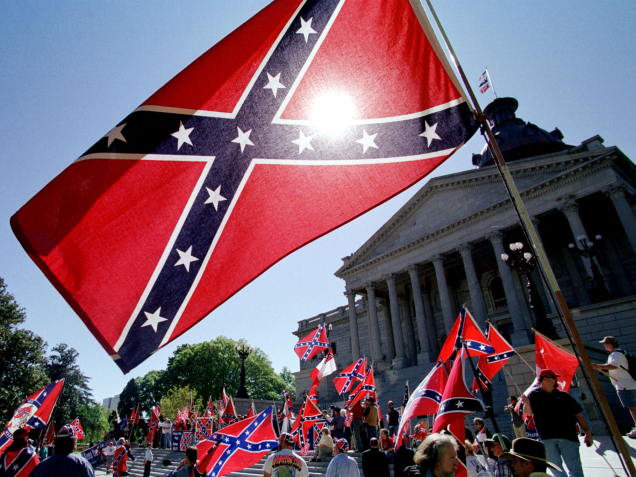South Carolina Gov. Nikki Haley has done what she had to do.
She signed a bill that brings down the Confederate battle flag that flew in front of the statehouse in Columbia, S.C.
Yes, it’s a mere symbol. However, it’s a powerful symbol … of hate, bigotry, tyranny and enslavement.
The South Carolina legislature debated the issue passionately, but decided ultimately to do what it had to do.
It needed to come down. The context, of course, is the horrifying massacre in that Charleston, S.C., church in which a gunman killed five African-American church members — including its pastor. A young man, Dylann Roof, has been accused of the crime and what we know about young Roof is that he is an avowed racist who waved the Confederate battle flag proudly as a demonstration of his intention to start what he called a “race war.”
http://www.msn.com/en-us/news/politics/south-carolinas-governor-signs-confederate-flag-removal-bill/ar-AAcLNgx
The flag is down and I’m glad about that.
However, one can take this campaign too far. I think it’s starting to veer into some tricky territory. TV Land has stopped showing “Dukes of Hazzard” reruns because the car that Bo and Luke Duke drove in the show had a battle flag emblem on its roof.
Now comes talk of removing Confederate military figures’ statues.
There is a certain historical significance in many of these monuments. These individuals were answering a call to duty. Yes, they were fighting to break up the Union. It’s good, though, to remind ourselves of our nation’s dark moments.
I have no problem with the battle flag coming down in places like South Carolina, where the Civil War started in 1861. The flag has become the emblem of hate; you see it flown at Klan rallies. The Texas Department of Motor Vehicles banned the flag from appearing on license plates, and the Supreme Court upheld the state’s right to issue that prohibition.
The flag is a hateful symbol. But not all monuments dedicated to the Confederacy conjure up the same level of intense loathing among so many Americans.
So, let’s seek to dial back the knee-jerk responses to other symbols that carry historic significance.

